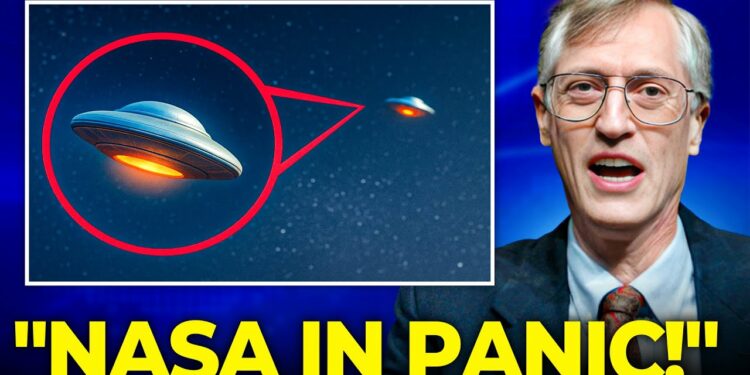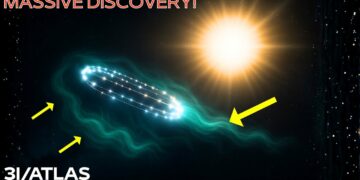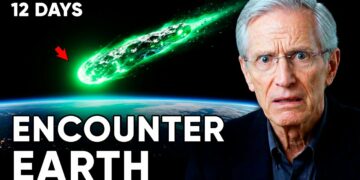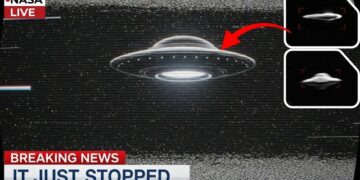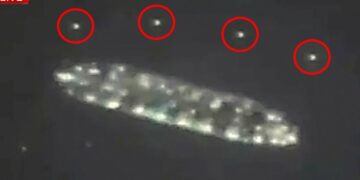For only the second time in history, a human-made object has left our solar system. NASA’s Voyager 2 probe has exited the heliosphere, the Sun’s protective bubble, and entered the vast space between the stars. Launched in 1977, this resilient spacecraft has traveled beyond Neptune and Uranus, past the heliopause—the boundary where the Sun’s influence fades and interstellar space begins. For over four decades, Voyager 2 has transmitted invaluable data, reshaping our understanding of the solar system and beyond. But recently, something unprecedented happened: Voyager 2, drifting in the cosmic void, turned back.
The heliopause, long considered the solar system’s edge, marks where the Sun’s magnetic field and solar winds give way to interstellar space. Voyager 2 crossed this boundary in 2018, a historic milestone. But this wasn’t the end—it was the start of a darker, more unsettling chapter. In early 2025, NASA’s Jet Propulsion Laboratory noticed irregular telemetry from the probe. Cosmic ray readings and magnetic field measurements showed subtle anomalies, initially attributed to natural fluctuations like cosmic particles or distant stellar activity. Then, the spacecraft’s trajectory shifted—slowly, deliberately, against its expected path. This wasn’t random drift or mechanical failure; something external had acted on it, powerful and precise.
Scientists were stunned. Voyager 2’s thrusters hadn’t fired, and its systems, though old, were functioning. The turn suggested a response to an external force. The data that followed was chilling: a surge in high-energy particles, far beyond typical interstellar levels, and a sharp, unnatural distortion in the local magnetic field. These weren’t random space weather patterns but rhythmic, almost structured fluctuations, hinting at something engineered. The probe had encountered a boundary—not the solar system’s edge, but something older, deliberate, and vast, possibly a containment zone or spatial threshold reacting to its presence.
Further analysis revealed a repeating electromagnetic signal, pulsing every 61.2 seconds. When converted to audio, it produced a haunting, organic hum. This consistent, structured signal suggested intent, if not intelligence. For decades, the Fermi Paradox—why we haven’t heard from extraterrestrial life—has fueled debate. Now, Voyager 2’s data suggests the answer may not be silence but deliberate concealment. The probe may have brushed against something hidden just beyond the Sun’s reach, something watching.
This discovery raises profound questions. If Voyager 2 touched an artificial perimeter, humanity is not alone—and we are not unobserved. The boundary’s purpose is unknown: protection, deterrence, containment, or a trap? Its properties defy physics, manipulating magnetic fields and possibly spacetime itself, hinting at a civilization with unimaginable technology. The region Voyager 2 encountered was eerily empty—no dust, gas, or background radiation, a void within a void, deliberately cleared.
The idea of an interstellar quarantine, once speculative, is now being taken seriously. Is our solar system enclosed to protect us, shield others from us, or isolate something dangerous within? Voyager 2’s course correction suggests it was warned to retreat. Though its cameras are long deactivated, its instruments continue to detect the fading but persistent pulse. AI analysis reveals layered modulations in the signal, possibly encoding, though deciphering it could take years—or may never be possible.
This isn’t just an astronomical breakthrough; it’s an existential turning point. The heliopause, once a milestone, may be a gate we weren’t meant to cross. Voyager 2, a fragile relic of human curiosity, has survived decades to trigger a response from the cosmic dark. The stars look unchanged, but for those aware of this event, they now burn with warning. Something intelligent is out there, and it knows we’re here.
What are your thoughts on Voyager 2’s unexpected turn? Share in the comments below. Like and subscribe for more updates on this cosmic mystery.

